How Alla Wolf-Tasker and the Lake House in Daylesford pioneered a regional rebirth
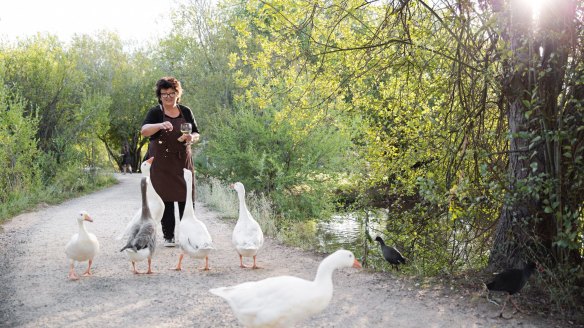
In an age in which any flash-in-the-pan chef brings out a cookbook after two years in business, three decades deserves a street parade and glitter cannon – or, in Alla Wolf-Tasker's case, a book pretending to be about Lake House but mostly celebrating the small producers who have helped make central Victoria one of the nation's most exciting food destinations.
There's never a very long time between drinks at this scatter cushion-strewn paradise on the shores of Lake Daylesford. Lake House is an idyll and aperitivo hour is its north star. But it has been a while between books – 10 years, to be exact – which makes Three Decades On: Lake House and Daylesford not just a worthy marker of the passing years but a timely reappraisal of a food world that has irrefutably changed since Alla and Allen Wolf-Tasker first spied their future on a trash-filled piece of land next to a waterway that was more swamp than lake on the edge of a depressed country town.
It's an origin story Alla Wolf-Tasker is understandably tired of retelling, but much like a child with a favourite book, its appeal to the food-interested public is undiminished. The car wrecks they had to pull from the waters. The caravan they lived in during the four-and-a-bit years it took to build Lake House. The Thursday trips between their day jobs in the city, infant daughter Larissa strapped in the back seat, to spend four services in their tiny 45-seat restaurant convincing Australian diners more interested in toasted cheese sandwiches and Devonshire tea to submit instead to the pleasures of twice-baked goats' cheese souffle, shiraz-glazed pigeon and tarte tatin.
To put Lake House's 34-year odyssey into a broader perspective, its debut in 1984 was the same year Tansy's was the Good Food Guide's best new restaurant and an unknown Ferran Adria was being hired as a line cook at a French restaurant called elBulli.
Lake House itself in its first year received the GFG endorsement of being "worth a special trip to Daylesford", then a forgotten town surrounded by Big Agriculture where eight shops operated along the otherwise deserted main street and unemployment hovered at more than 20 per cent.
That they not only survived but thrived, adding accommodation, a spa, cooking school and cafe and scooping up countless awards in the process, is all the more impressive given that 30 years in the restaurant world is like 90 in the rather duller place known as the real world.
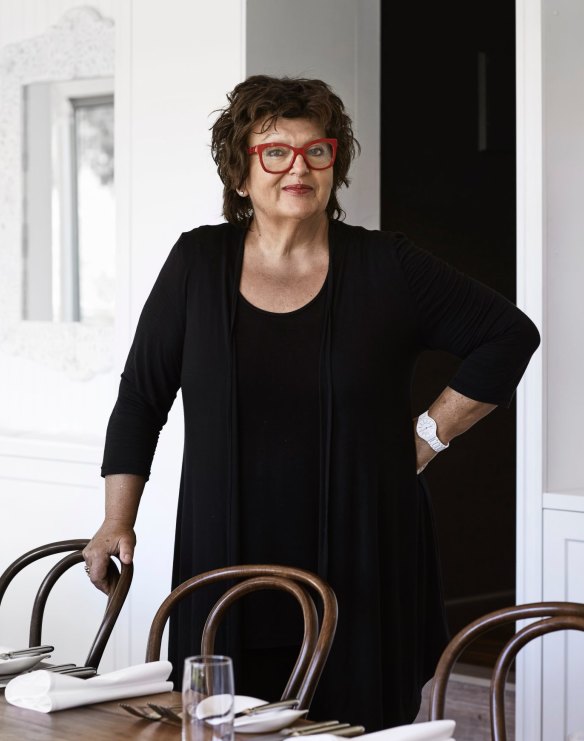
Wolf-Tasker laughs now at the build-it-and-they-will-come mentality (not to mention the tears of her Russian mother, who owned a dacha – small country house – nearby and was aghast at her daughter's mad plan), but history did prove their "unrealistic vision" correct. Lake House is often credited – quite rightly – with kick-starting regional destination dining in Australia at a time when travelling within Victoria was distinctly unfashionable and the smart set flew to the Gold Coast for their holidays.
"The simple matter was that we had a vision and that the land was dirt cheap and we didn't stop to ask why it was dirt cheap, or why it had been on the market for 10 years," says Wolf-Tasker. "I'd worked at some restaurants in the French countryside surrounded by small producers and a real food community that just blew me away. It was a food editor's wet dream, all the battalions of waiters in their long aprons and white market umbrellas. We didn't even have those umbrellas in Australia in those days. The thing that was in my head was so far away from what we had. The only reason we embarked on it was because I had this foolish notion that people would drive to a country destination restaurant because I'd seen people do it overseas."
This is the pointy end of the Lake House story, one that might be studied by an enterprising PhD student in food sociology. To put it in modern social media parlance, the Wolf-Taskers became influencers. Not only intent on keeping guests well fed, they encouraged a sustainable community of small producers to grow around them.
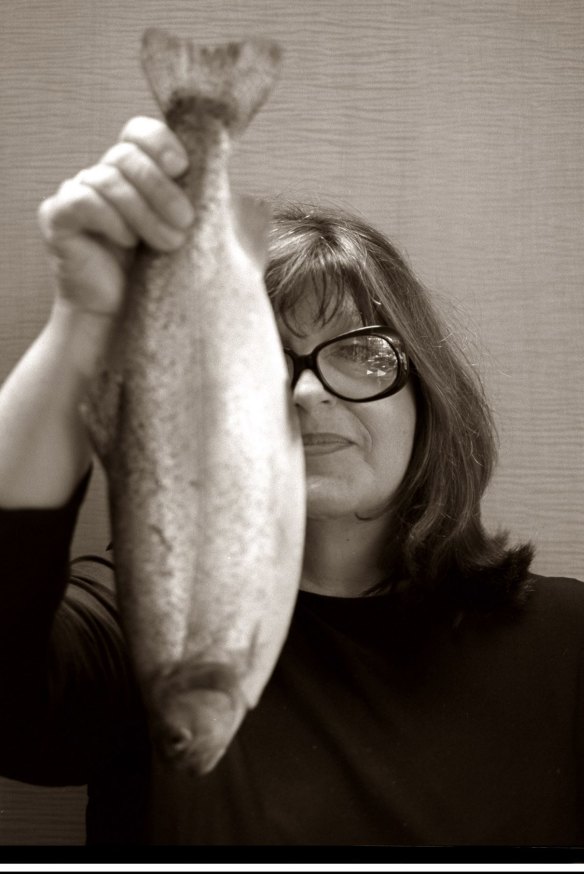
Wolf-Tasker might have played with making her own goats' cheese at a time when none other was available, but the idea was never to become a self-sustaining restaurant with its own vast kitchen garden. She envisaged a community of small-scale producers like she'd seen in rural France, working in tandem with the hospitality industry. There was nothing much in Daylesford ("just potatoes"), and this is where the naturally bolshie Wolf-Tasker nature kicked in. "I thought if I could help promote people who grew for us eventually the penny would drop. You have to create demand to grow a local food community because unless you do the food just flows out of the region. The producers aren't going to wait for me or Stefano de Pieri [from Mildura's Grand Hotel] to ride along on a bike with a wicker basket and buy two bunches of basil. You've got to create a critical mass of people buying local produce."
The pursuit of that critical mass saw Wolf-Tasker embark on a three-decade crusade requiring energy levels approximating the Tasmanian devil in the Looney Tunes cartoons. She started Daylesford Macedon Produce to connect restaurants, cafes and local producers. She initiated the first committee on tourism for the region. She sat on countless restaurant and tourism industry bodies and government think-tanks. She became a mouthpiece for the region and the restaurant industry, an ally for its producers and has been made a Member of the Order of Australia (making her officially Alla Wolf-Tasker AM) for her efforts. Underlying all these "extracurricular activities" is the philosophy that a regional destination restaurant cannot exist in isolation from its region. Daylesford had to come with Lake House.
"In a way, it probably became a repeatable model for anyone unafraid of hard work and crazy enough to do it," she writes. "Things became a great deal easier as regional areas grew their tourism potential and once regional destination dining became a desirable commodity. In our case, it was the egg coming before the chicken."
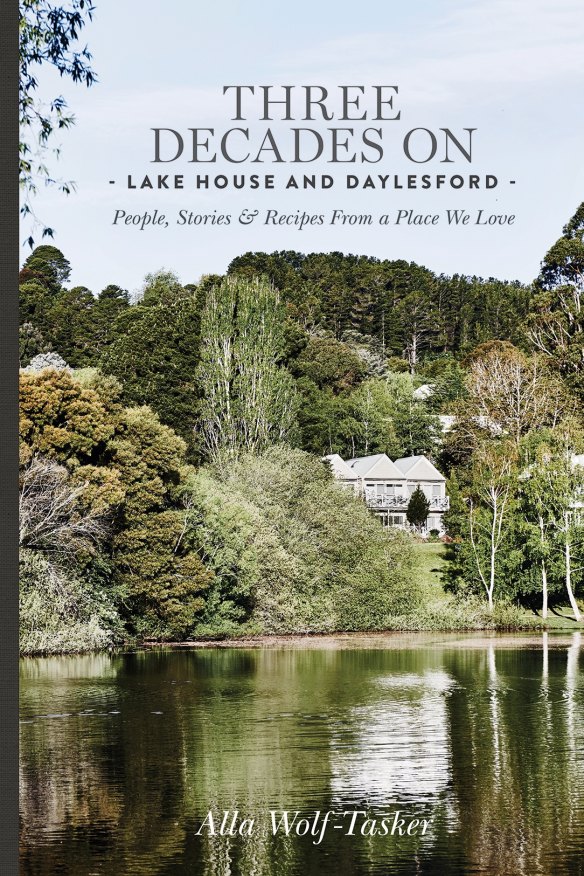
The producers are the real heroes of Three Decades On. The Daylesford Story. Among those highlighted in the book: Bruce and Ros Burton's organic chickens from Milking Yard Farm. Carla Meurs and Ann-Marie Monda of Holy Goat cheeses. Tim and Deri-Anne Wyatt, the "plant whisperers" of Angelica Organic Farm. Sharon Flynn and Roger Fowler from The Fermentary, which has taken over a disused abattoir on the edge of town in its pursuit of "gut democracy".
"The change in our neck of the woods has been enormous but that's because we've been pushing it," says Wolf-Tasker. "The understanding of good food has changed in Australia, from the point of view of deliciousness and health. People are starting to be suspicious of their food. While I wish it wasn't self-interest driving it, it's important that people once more remember the seasons and know what happens to imported garlic to get it into Australia and the dye used on stored grain."
Make no mistake: Three Decades On is a fun read (and it has recipes and all the lush photographs required of a book that can move easily from the kitchen bench to the coffee table). Wolf-Tasker writes as well as she cooks and the move to self-publish has given her the delicious prospect of "a chance to tell some truths".
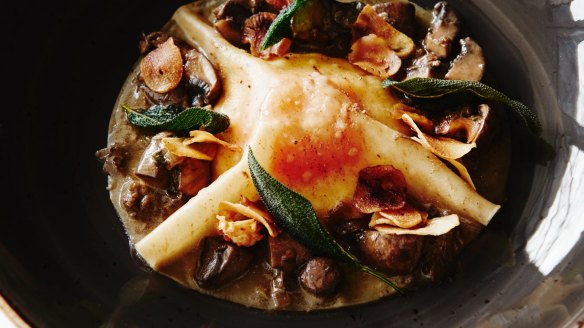
She takes a timely pot-shot at the FOMO (fear of missing out) that hums underneath identikit restaurant menus as chefs go chasing each other down the rabbit hole of food fashion. Self-evidently a believer in finding your voice and sticking to your guns (every dish on that debut 1984 menu could still appear on the Lake House menu, although the pigeon will have come from a more reputable supplier these days), even a chef as revered as Wolf-Tasker can admit to occasional pangs of self-doubt. "I haven't stopped looking at social media but I've gotten better at pushing it away. There are dishes I might appreciate being served elsewhere in the world that would be stupid to serve here."
The Wolf-Tasker remit has stretched beyond the borders of the Hepburn Shire Council to take on a national complexion. Last year saw the launch of her Good Food Matters Regional Producers Scholarship, which provides $5000 for a small producer to boost their skills through travel or training. And next on the to-do list is the not-for-profit Institute of Gastronomy, a collaboration with William Angliss intended to plug the skills shortage plaguing kitchens across Australia that has just finalised its first report for the business case and is hoping to start looking at central Victorian locations.
"It's looking promising. The outcome I'm hoping for is an innovative approach to culinary education. At the moment it's being so badly dumbed down, we have graduates who arrive with only basic chopping of vegetables skills. The institute would be an opportunity to learn artisanal skills like charcuterie, sourdough baking, butchery. It need a solid link to an agricultural community like we have here and also gives an opportunity to create a hub with all these people in specialty farming." It's a subject on which Wolf-Tasker has much to say: even the recipe section for ballotines in Three Decades On features this delightful segue: "Did they come off menus because of the cries for 'simpler food' from consumers, or was the decision really fuelled by the cost of maintaining this sort of skill set in kitchens?"
Lake House is "an overnight success story, 35 years in the making", as Wolf-Tasker likes to say, but there's no end point for their house by the lake and the myriad projects that swirl around it. There are always new plans on the drawing board. In fact, the big news from the Wolf-Tasker camp is the farm, seven minutes from Lake House, they have just bought; an admittedly bold move, both financially and conceptually, when they might be resting on their laurels and enjoying aperitivo hour a little more. Still reeling somewhat from taking the plunge, Wolf-Tasker is unsure what form the new venture will take. "The place will need to be productive, but it might provide some opportunities for some local growers we know and have been speaking to. But also, the prospect of planting for prosperity rather appeals to me. I have my eye on some endangered species of trees that no one now bothers to plant much any more."
The clincher was the proud line of birch trees along the driveway, a reminder of her mother's Daylesford dacha that started the whole thing. From little things big things grow.
Lake House: Thirty Years On is available through bookshops and lakehouse.com.au
Autumn harvest - confit duck yolk, chestnut pasta, foraged mushrooms, celeriac, sage chips
INGREDIENTS
Chestnut pasta
200g 00 flour
75g chestnut flour
7 yolks
1 whole egg
2g porcini powder
splash (about 25g) olive oil
Celeriac puree
1 medium-sized celeriac
enough milk to cover celeriac
salt
Mushroom ragout
70g butter
2 finely diced shallots
1 garlic clove, chopped
5g porcini powder
40ml white wine
400g wild mushrooms, cleaned and sliced
1 thyme sprig
110g cold butter, diced
salt and pepper
Confit duck yolk
1 duck egg per person
olive oil
fresh thyme sprigs
Garnish
1 handful sage leaves
METHOD
For the chestnut pasta
1. Combine the dry ingredients and make a well. Add the eggs and enough olive oil for a dough to form when combined. Knead until smooth. Rest for 30 minutes. Divide dough into four pieces.
2. Work the pasta through the rollers of a pasta machine a few times to smooth. Then roll out, successively reducing the settings from highest to lowest. Repeat with all the dough. Cut out pasta discs 8-9cm diameter. Store between greaseproof paper in refrigerator until ready to cook and serve.
For the celeriac puree
1. Peel the celeriac and cut it into cubes. Put the celeriac into a medium saucepan and add milk to cover. Bring to a simmer. Cover with a cartouche (paper lid) then reduce the heat. Cook until tender. Blend celeriac with a hand-held blender or in a processor with enough milk to help produce a smooth (but not runny) puree. Season and keep warm to serve.
For the mushroom ragout
1. Melt the butter in a pan and saute the shallots and garlic until softened. Add porcini powder and stir through. Pour in the white wine stir and reduce to a syrupy glaze.
2. Add mushrooms and thyme and saute for about four minutes. Juices should seep out of the mushrooms, but add a couple of splashes of water or stock to assist if required. Cook at a gentle heat for about 20 minutes.
3. Remove from the heat and stir in a little of the cold butter a little at a time. Season to taste. Keep warm.
For the confit duck yolk
1. Cook the duck eggs in the shell at 63C for about 45 minutes (if you have particularly large duck eggs add a few more minutes). Refresh in iced water.
2. When needing to serve, crack shells and peel off shell and eggwhite. Place yolk in warm olive oil (60C) with thyme sprig for 10 minutes. Alternately a well trimmed soft poached egg may be used.
For the garnish
1. Wash and dry sage leaves and fry in butter until crisp
To serve
1. Blanch the pasta discs in plenty of boiling, salted water for 30 seconds, place onto a cloth to drain. Keep warm.
2. Place a spoonful of celeriac puree in centre of each plate. Make a well in the middle and slip in the well-drained warm yolk (or poached egg). Season the yolk.
3. Spoon some of the mushroom ragout around. Place the pasta disc on top of the yolk. Spoon additional mushrooms over the pasta and sprinkle over the sage leaves.
Serves 4
Restaurant reviews, news and the hottest openings served to your inbox.
Sign up